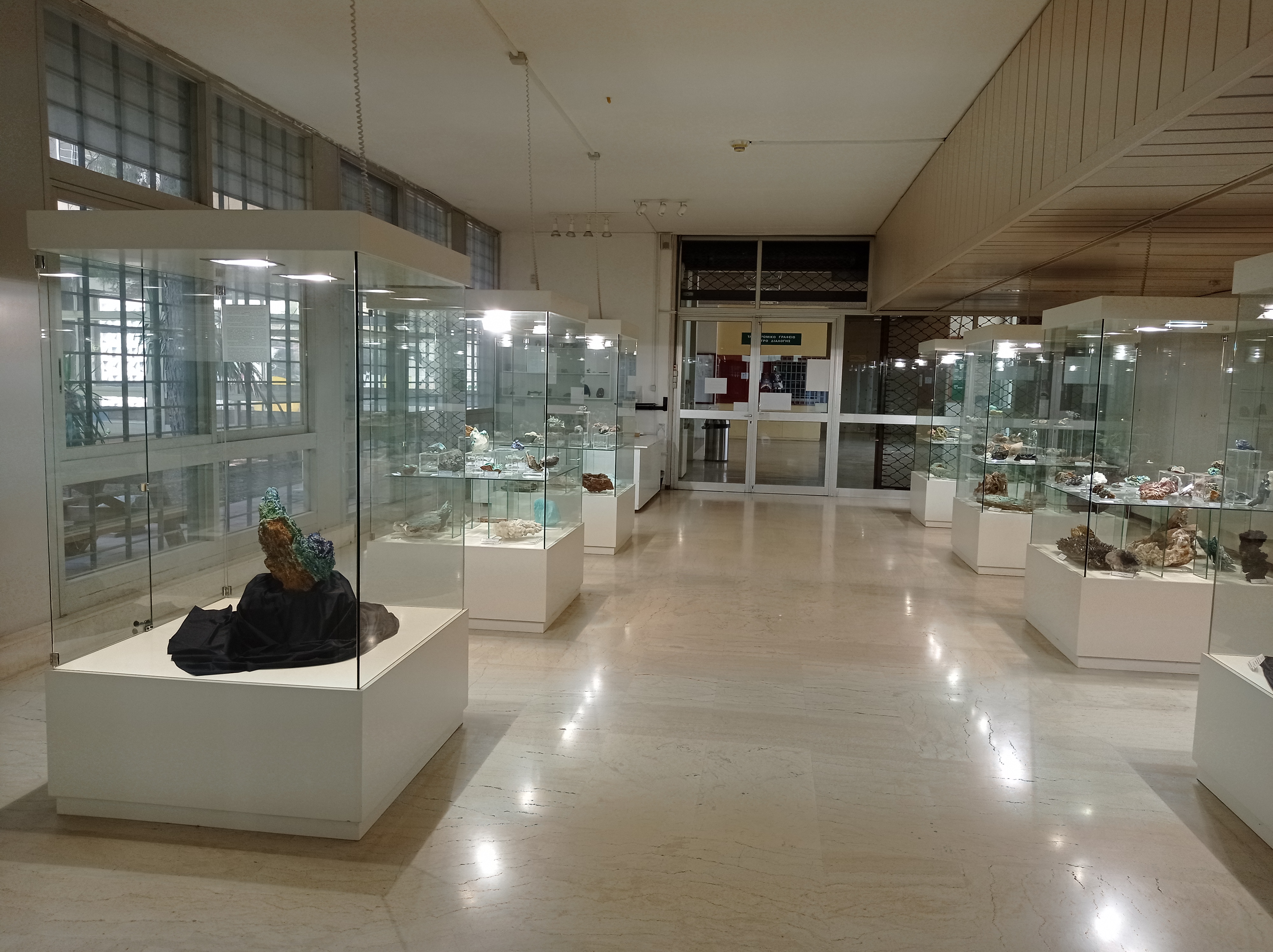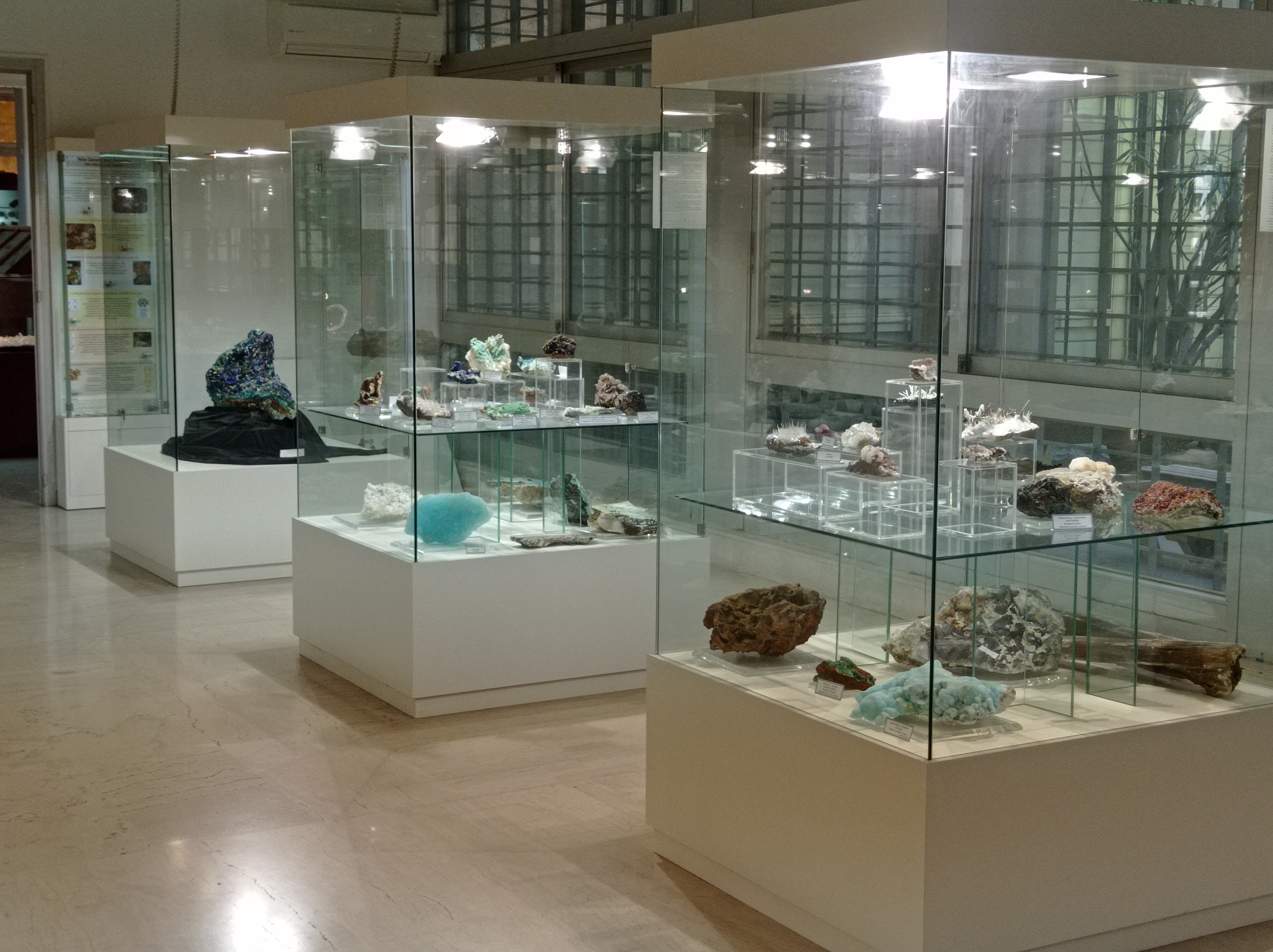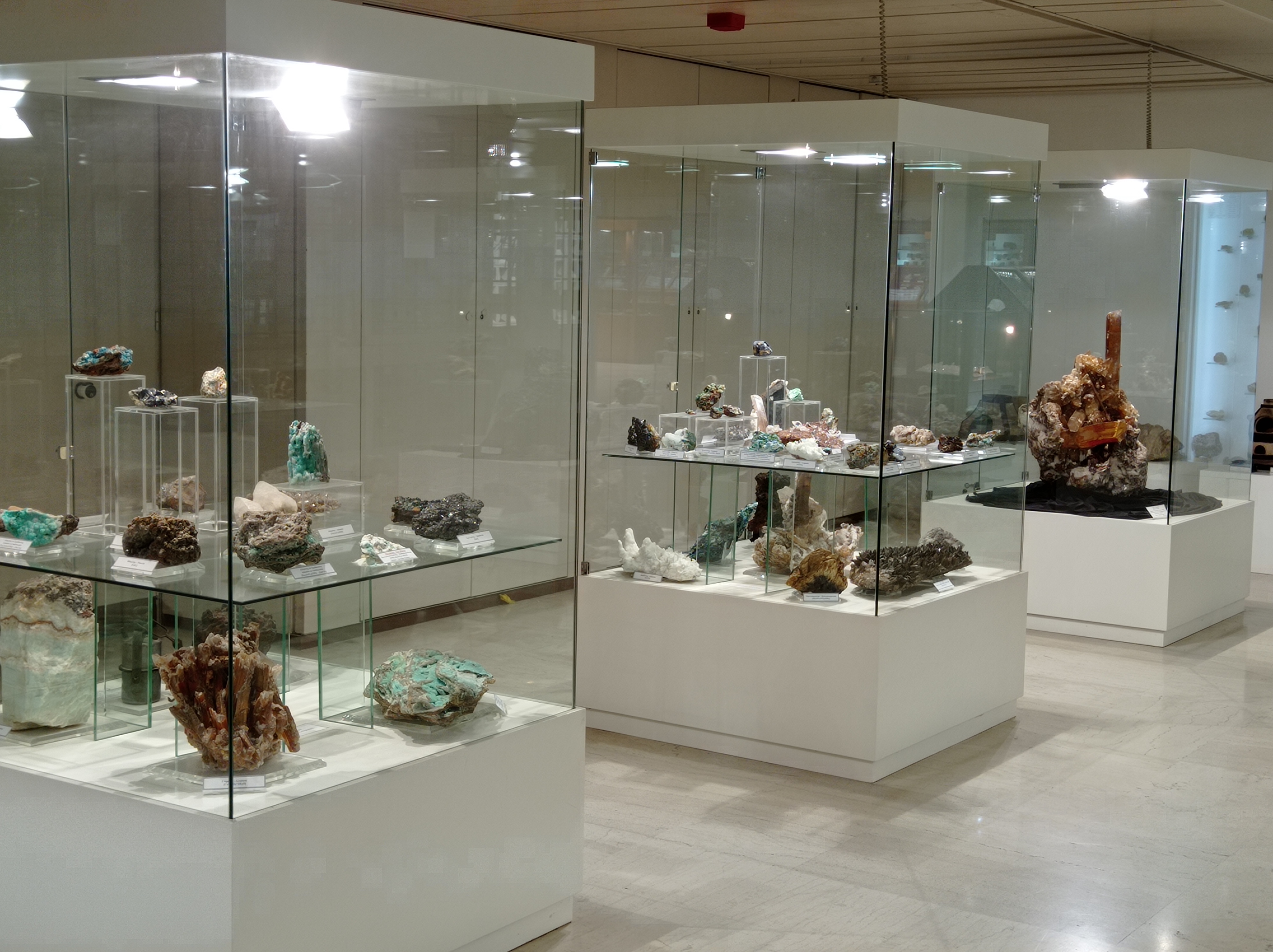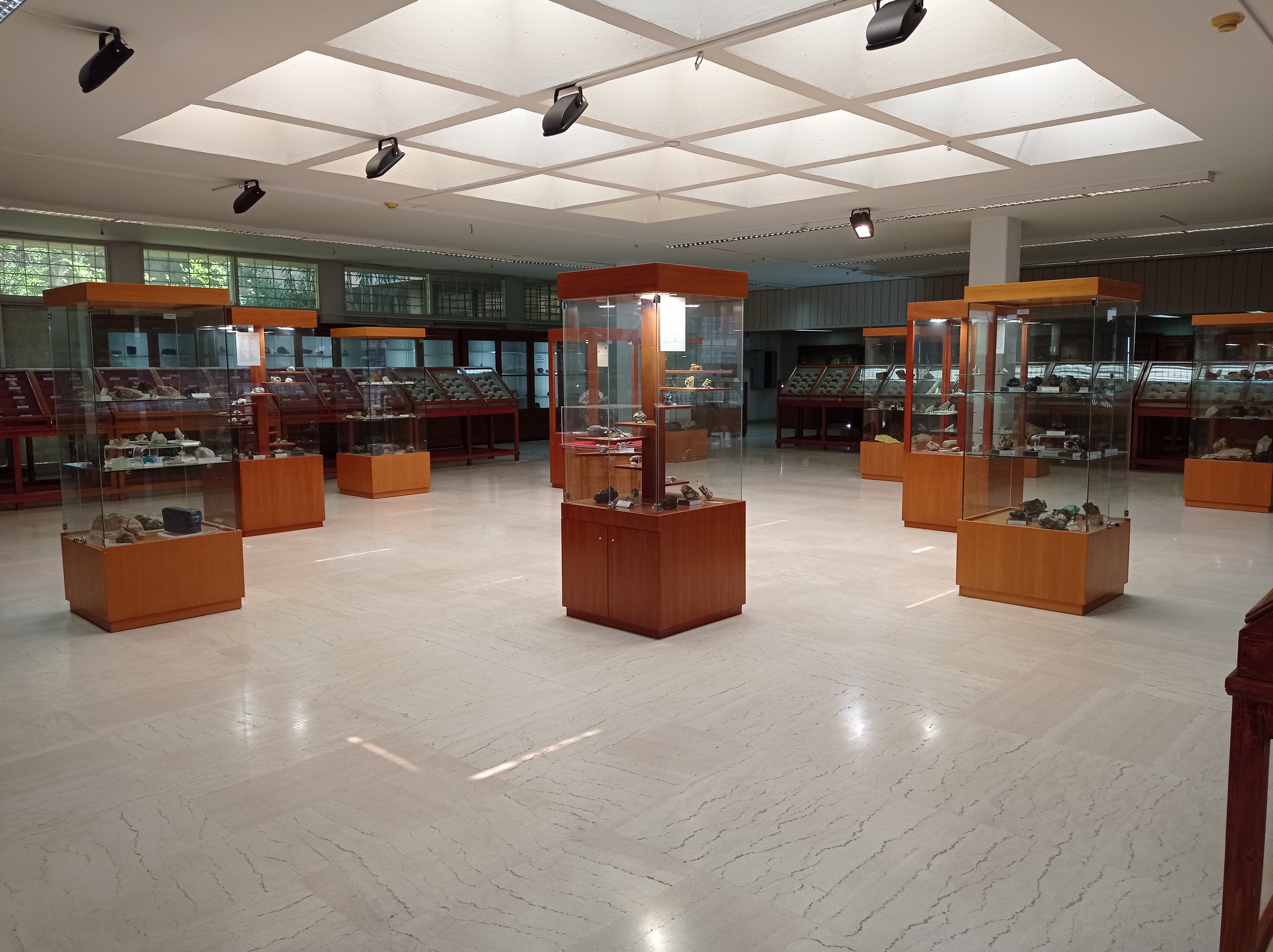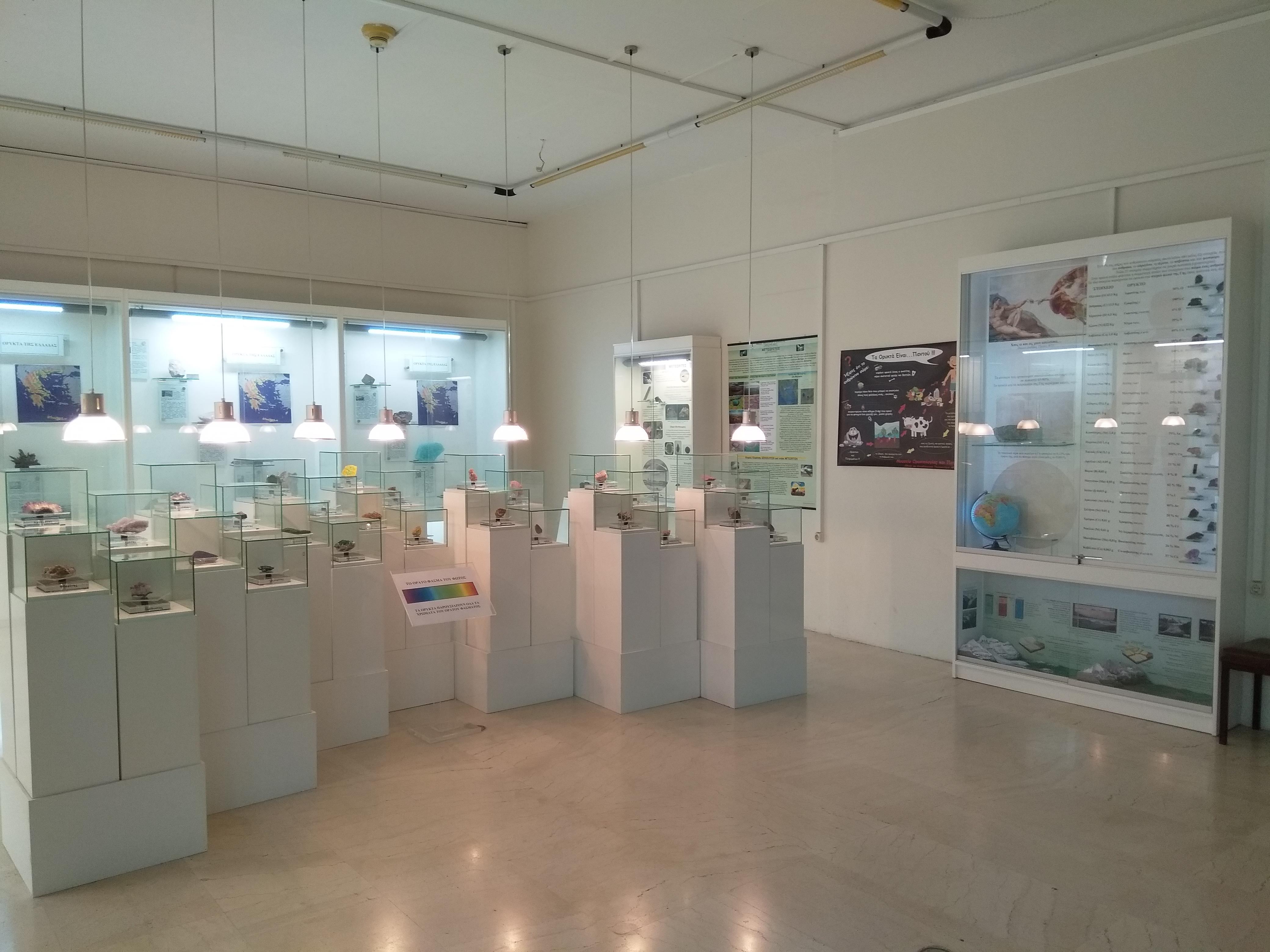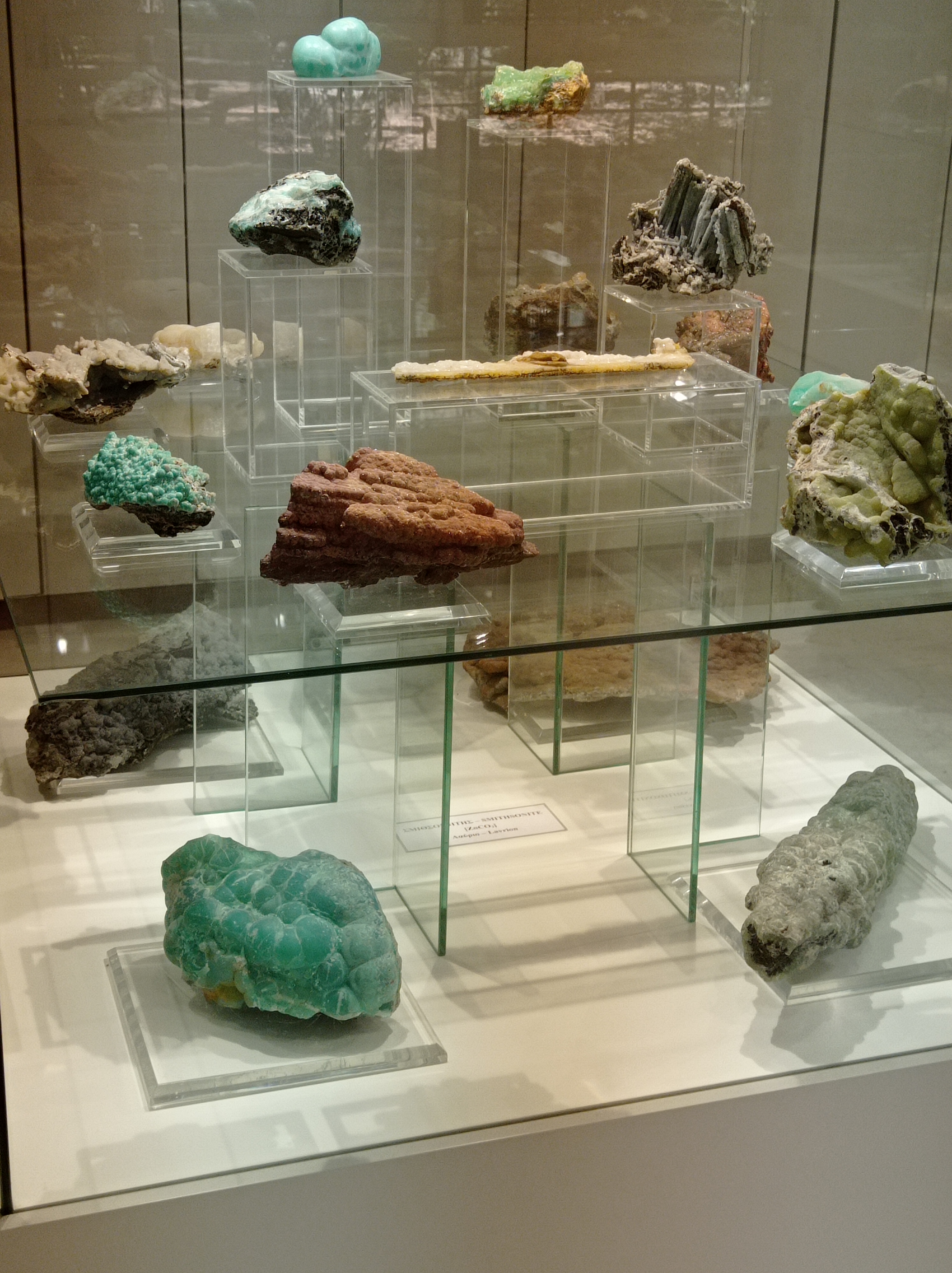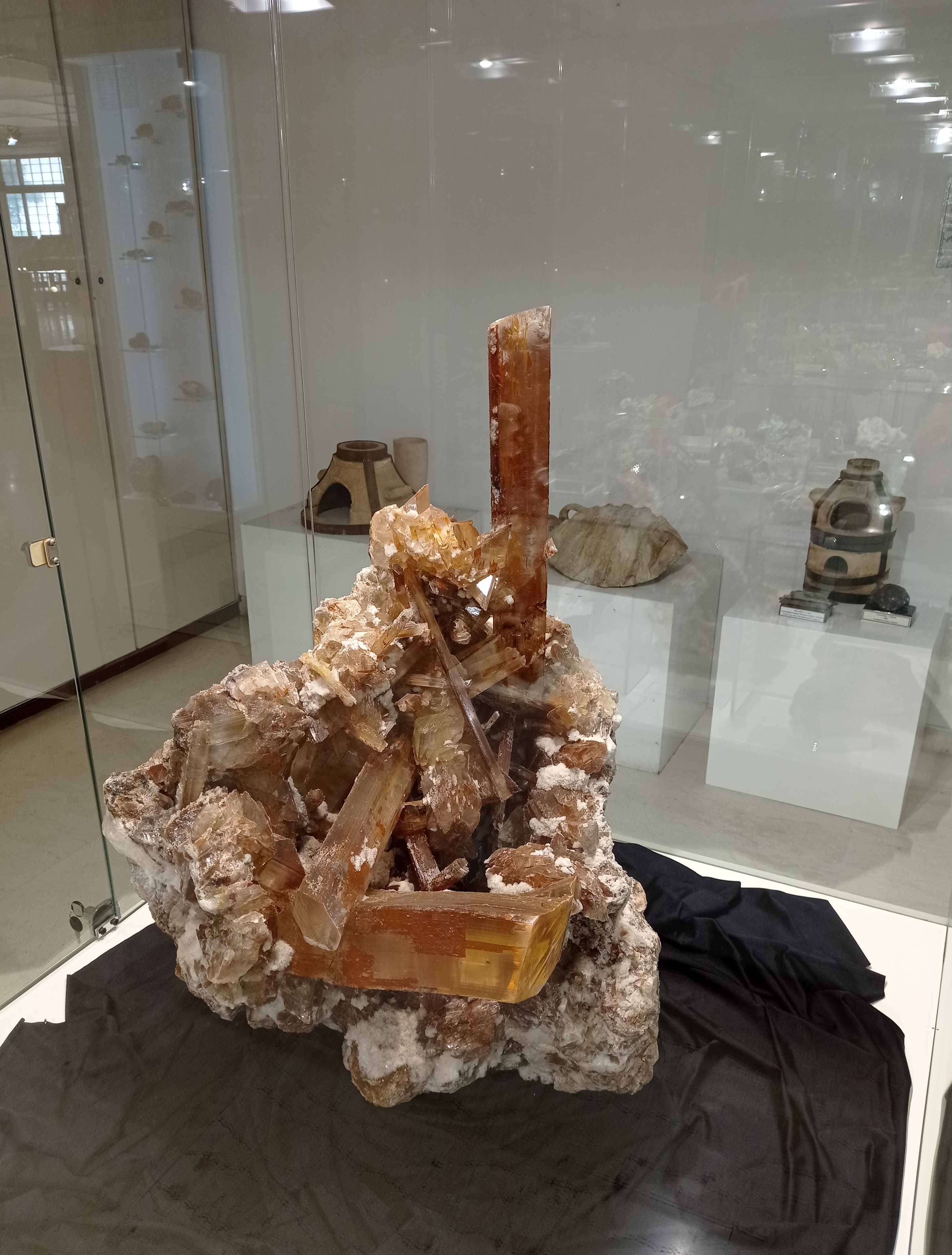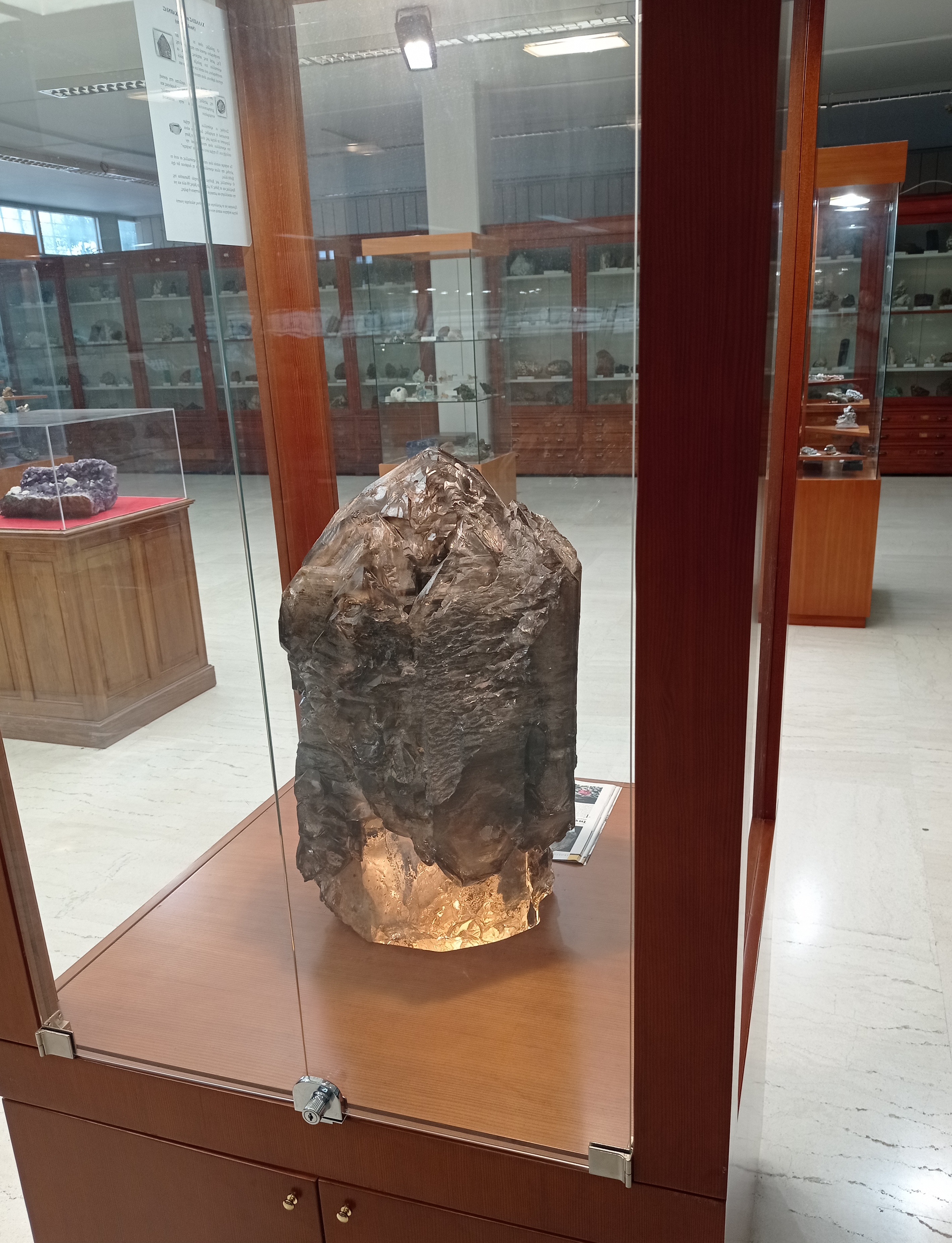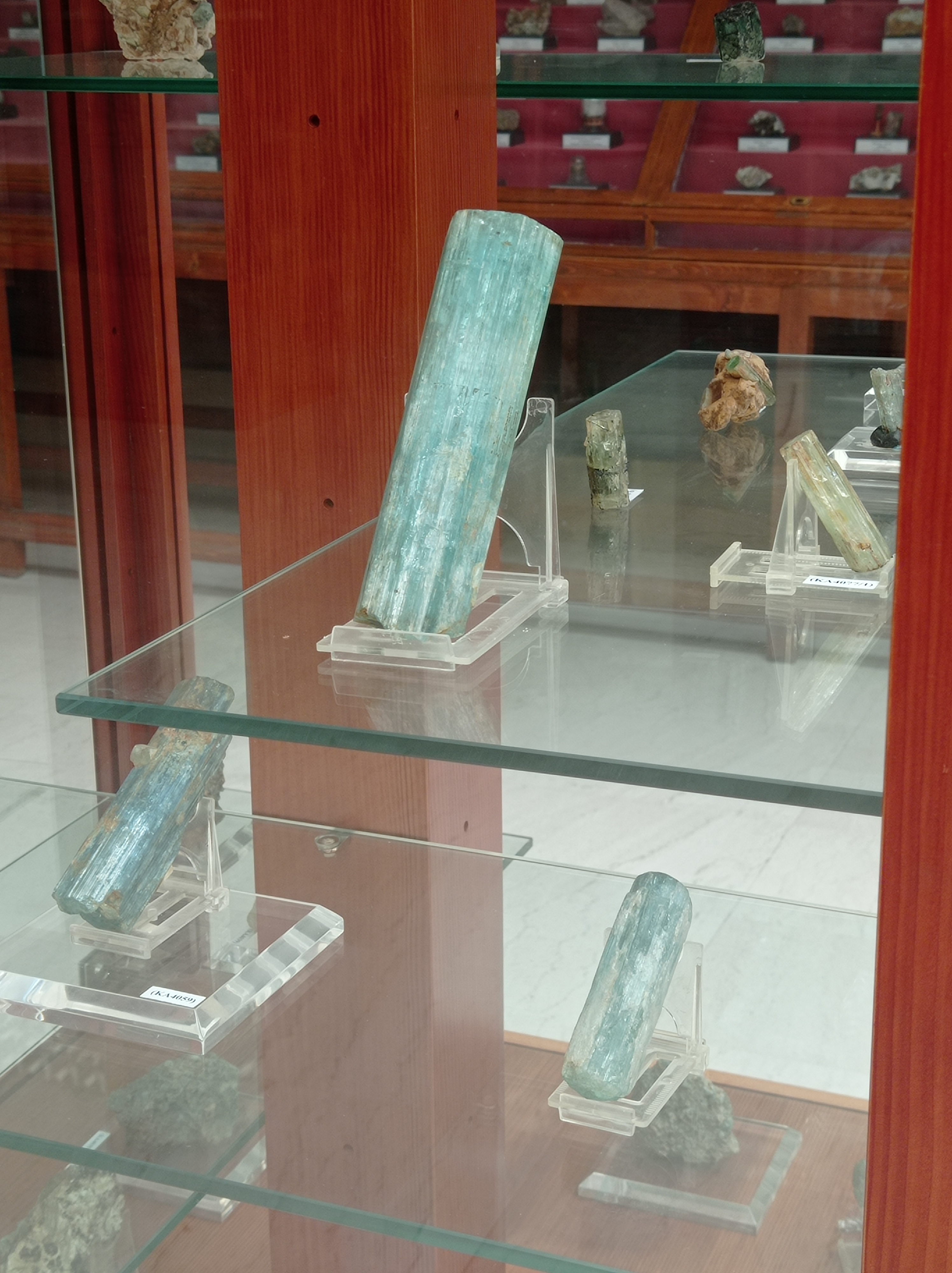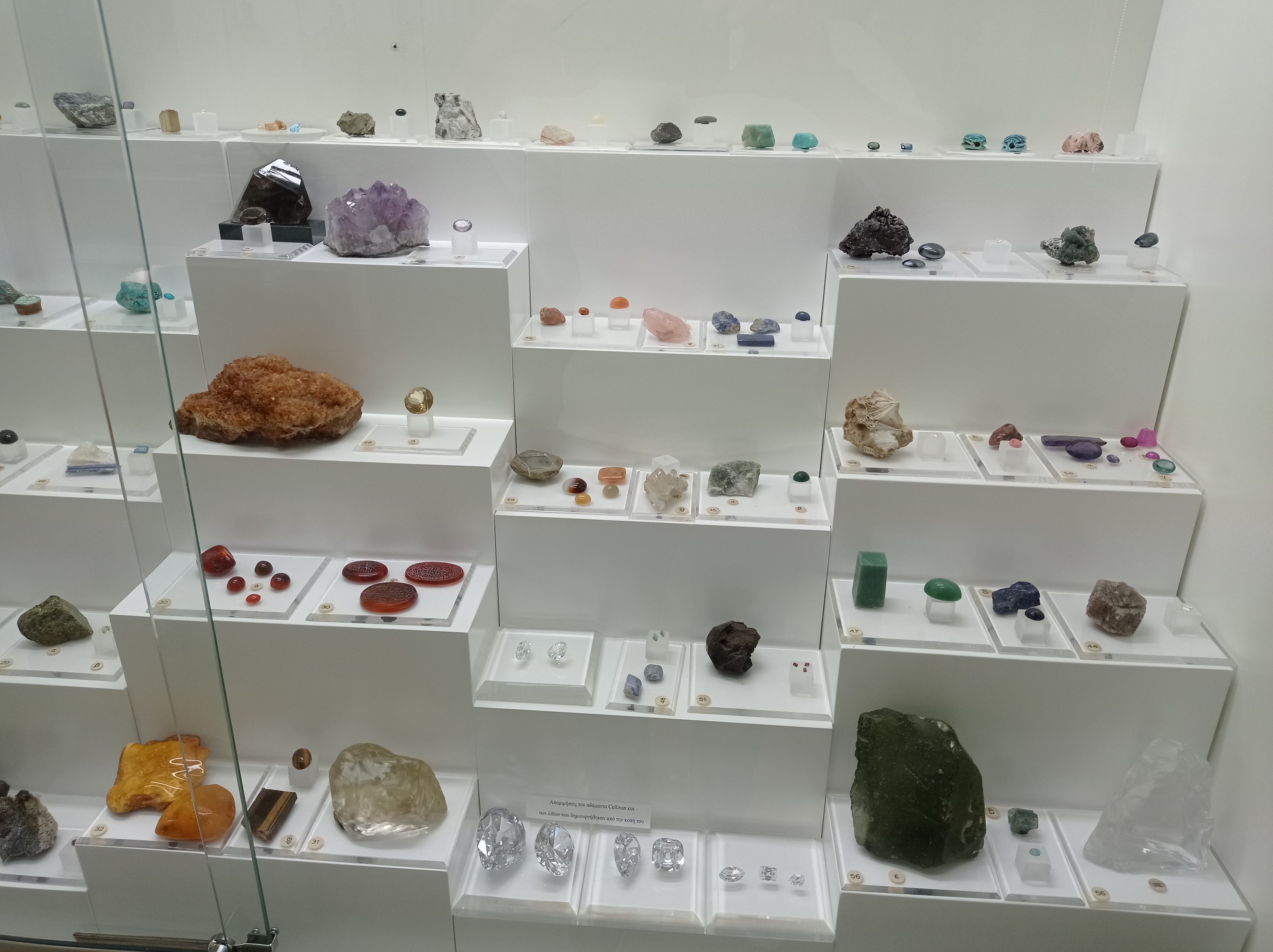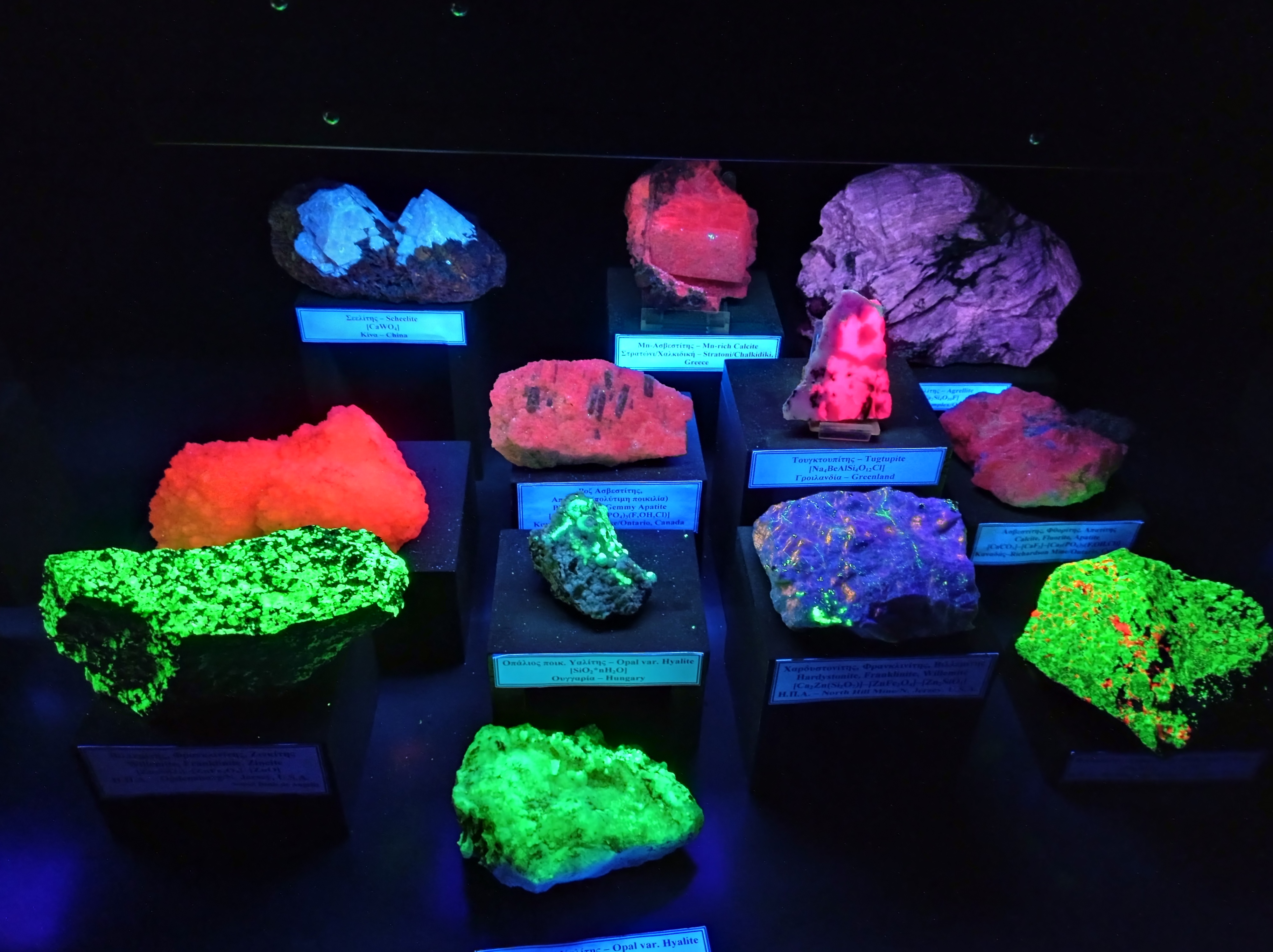Identity
The collections of the Mineralogy and Petrology Museum intend to support the educational work of the Department of Geology and Geoenvironment at the undergraduate and graduate level by promoting scientific research and the dissemination of knowledge both to the university community and to the broader public. To fulfill its objectives, the Museum compiles and maintains teaching and research collections from Greece and abroad, conducts scientific research, organizes lectures, exhibitions, educational programs, and other events that help disseminate knowledge and highlight and protect local findings. The education and the training of students on mineralogy, petrology, geology, and the over-all dissemination of knowledge pertaining to the Greek nature, spark in them awareness about environmental issues. Responding to present-time demands and the gradual shift to renewable energy sources, specific raw materials, and critical metals, the Mineralogy and Petrology Museum aspires to highlight and scientifically document mineralogical collections from the Greek regions using high-tech applications. The need to demonstrate the significance of mineral wealth commands one of the Museum’s central goals, the direct dissemination of knowledge to a non-scientifically trained public through interactive and digital educational programs.
History
The Museum of Mineralogy and Petrology collections were created within the framework of the Physiographic Society, founded in 1835. The University housed the collections in its quarters since its foundation in 1837. From 1858 on, it began to operate as an annex of the Physiographic Museum, along with the collections of Geology and Paleontology. In 1908, the University Museums of Mineralogy - Petrography, Paleontology - Geology, Zoology, and Botany were formed from the collections of the Physiographic Museum, and since then, they have been operating as independent branches. Since 1982 it has belonged to the Department of Geology and Geoenvironment and, administratively, to the Department of Mineralogy and Petrology. Mineralogy and Petrology professors, I. Mitsopoulos, K. Mitsopoulos, Th. Skoufos, K. Ktenas, G. Georgalas, M. Mitsopoulos, A. Georgiadis, and G. Marakis were the Museum's successive directors from 1858 to 1993. Until 1979 the Museum of Mineralogy and Petrology was housed in the "Kostis Palamas" building on Akadimias Street. At that point, its collections were transferred to the Panepistimiopolis-Campus, where they were stored until 1996. The Museum's collection was severely damaged during this move, and several samples were destroyed. From 1996 to 1999, and under the supervision of Professors K. Sideris and A. Katerinopoulos, the Museum's samples were classified and identified anew by Dr. P. Voudouris. The Museum reopened on February 7, 2000, under the direction of Professors A. Katerinopoulos (2000-2017) and later A. Manganas (2017-2020) and P. Voudouris (2020-today). The majority of the Museum's exhibits were acquired mainly from donations and purchases from Greece and abroad. They are described as follows: The first essential collections were acquired by the Museum in 1858 and 1860 as donations by Kämmerer and Haritov, ministerial advisor and consul in St. Petersburg, respectively; they included samples of minerals and precious stones from Tsarist Russia. King Otto and Queen Amalia made a significant donation of Greek minerals in 1863. The Museum enriched its collections with the donations of F. Negris in 1928 and S. Papavassiliou's minerals from Naxos. More recent donations (1997-present) are those of An. Tataris, C. and K. Kapellas, G. Vafeidis, A. Tsolakos, P. Voudouris, Metaxas family, A. Katerinopoulos and Ch. Solomos, minerals from Greece and abroad and N. Lambrinidis' cut and uncut precious stones. As of 2000, the Museum has been equipped with new display cases and exhibits, which formed the basis for its various educational programs. Nowadays, the Museum's collections are being reclassified and reorganized, based on the revised guidelines of its future operation.
Types of audiences
The Museum's exhibitions and information material beneficiaries are undergraduate and graduate students, geologists, Natural History Museums, mineral collectors, teachers of primary and secondary education, students, archaeologists, museologists, and the general public. Also, the Museum extends the use of its collections to Greek and foreign researchers for research and study purposes, the results of which are being announced in scientific meetings, conferences, and publications.
Collections & Exhibitions
The Museum currently possesses at least 10,000 samples of minerals and 15,000 samples of rocks. Around 3500 samples of minerals and 400 samples of rocks from the collection are exhibited in the display cases. The Mineralogy-Petrology Museum has the best-organized collection of minerals in Greece, with more than 700 kinds of minerals classified in every classification category. The Museum's collections include an extensive historical archive with the donations' original documents, e.g., from Otto and Amalia, Fokion Negri, and the historical geological maps. Today, the Museum's sample collections are exhibited in a separate space in the Department of Geology and Geoenvironment building complex. The Athens University Mineralogy-Petrology Museum carries not only the oldest mineralogical-petrographic collection in Greece but its collection has an international range since world-class mineral samples are exhibited there. The collection's significance is not owed only to the visually appealing samples but also to the wealth and quality of mineral samples from "classical" locations of the former Austro-Hungarian Empire, the former German Empire, Tsarist Russia, and mainly from sites that today exist only in bibliography. The Museum's collections encompass a plethora of samples from the Bohemian Ore Mountains in Slovakia, such as Schemnitz, Kremnitz, Freiberg in Saxony, the Harz Mountains in Germany, Siebenbuergen in Romania (Nagyag, Banat, Felsobanya), the Ural Mountains (Miask, Nizhny Tagil, Achmatovsk, Mursinka) and Siberia (Nerchinsk), and other well-known foreign mining sites, such as Cornwall, England. The samples exhibited in the Museum's central hall cover the broadest range of minerals and precious stones mined in the 18th and 19th centuries, mainly in the Urals. An approx. 25cm sample of perovskite crystals up to 3cm from Achmatovsk stands out and, also, from Nizhny Tagil, a 3 x 3 cm platinum nugget and samples of malachite. Crocoite crystals up to 2cm long come from the Beresovsk mine near the city of Ekaterinburg. The collection is supplemented with gemstones found only in the largest mineralogical collections in the world: a sample of blue topaz of up to 5cm long with smoky quartz from Murinska in the Urals, a triple crystal of alexandrite of 5cm from the emerald mines of the Urals in Malyshevo and a 20cm piece of pegmatite with zircon crystals of 3cm from Miask in the Ilmen Mountains. The aquamarine crystals from Nerchinsk in SE. Siberia are of rare transparency and purity. A clear crystal of beryl (aquamarine) 18cm high stands out among them. The Museum also houses a plethora of other exhibits, "historical" samples of high quality, among the best of their kind. The 15cm high antimonite crystals from Shikoku, Japan, the 10cm franklinite crystal from Franklin/New Jersey, a sample of approx. 15cm with 1cm pyrargyrite crystals on quartz from Freiberg, Saxony, transparent yellow-green and red sphalerite crystals up to 1cm from Kapnick, Romania, unique samples with transparent crystals of topaz yellow color from Schneckenstein, Saxony, vesuvian from Vesuvius (crystals up to 2cm), and analcime (crystals up to 7cm from Seisser Alm in South Tyrol) are among the exceptional samples that stand out. Finally, a sample of smoky quartz in the shape of a 75cm high scepter mined from Minas Gerais in Brazil is one of the Museum's unique exhibits. Samples from "classical" locations in Greece, such as Lavrio, Serifos, and Chalkidiki, also occupy a prominent place in the Museum. The Museum's first hall is dedicated to Lavrion and houses a unique collection of Smithsonites colored green, turquoise, blue, yellow, from which a unique sample of stalagmitic Smithsonite approx. 60cm long stands out. This collection dates from the end of the 19th century to the beginning of the 20th century. In the mineral collection of Lavrio, one can admire excellent samples of adamite (crystals of green and light blue color), serpierite (needle-like blue crystals covering calcite from the area of the Serpieri mine in Kamariza), and rare samples of galenite crystals (up to 8cm), and sphalerite crystals (up to 2cm) along with quartz from Avlaki. The collections from Serifos, Naxos, and Chalkidiki contain historical samples representative of each region. We observe a sample with a cluster of green quartz crystals ("prasio") from the area of Avesallos in Serifos. From the Olympias mine in Chalkidiki, a sample of iron pyrite stands out with edges up to 15cm, and finally, perhaps the Museum's best Greek sample comes from Naxos, a piece of approx. 30cm with crystals of deep blue sapphire of up to 3cm, in paragenesis with margarite and tourmaline.
Events & Activities
The Museum carries out various events such as "Sunday Mornings at the Museum of Mineralogy," with educational activities, guided tours, and lectures aiming to familiarize the public with the world of minerals and rocks or exhibitions such as the "Exhibition of Greek Mineral Collectors," with personal collections of minerals from all around the world.
Accessibility
The museum is accessible to physically challenged people through the Museum’s side entrance (currently under reconstruction).
Terms of Operation
Open Monday through Friday 9.00 - 14.00. It remains closed on public holidays, Christmas, Easter and the month of August.
Director:Panagiotis Voudouris, Professor, Department of Geology and Geoenvironment.
Decision of Establishment
GG 86/A'/23.3.1932 Official Gazette 1969/3.11.1999

